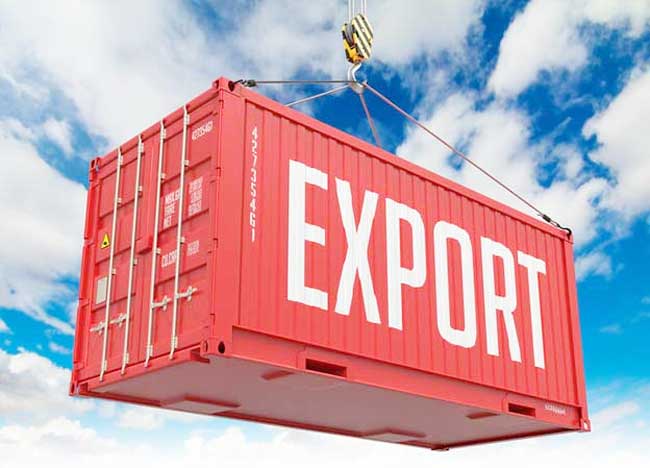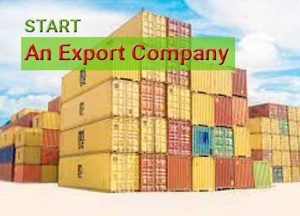If you like to export goods and/or services, some kind of registration procedure is being completed in most of the countries. Some times export licence may be obtained from concerned…
Category: Export

How to export from India
If you like to export goods and/or services, some kind of registration procedure is being completed. Sometimes export license/permit may be obtained from the concerned government department.
Usually, for importation of goods and/or services in India need IEC (Importer Exporter Code). It’s a one-time registration to act as an Exporter/Importer in India.
However, if restricted items are exported, a separate import license/permit may be required to export such restricted goods. Categories of products classified under freely exportable, restricted to export, and prohibited to export are published from time to time. The products under the Prohibited list of goods are not permitted to export which may be referred to the official website.
- Establish an Organisation
- Obtaining Permanent Account Number (PAN)
- Obtaining Licence from LSGB
- Open Bank Account
- Obtaining Importer-Exporter Code (IEC) Number
- Obtaining Registration Cum Membership Certificate (RCMC)
- Obtaining Goods and Service Tax Identification Number (GSTIN)
- Selection of Goods or/and Service
- Selection of Markets
- Selection of mode of transportation
- Pricing/costing/INCOTERMS
- Processing an Export order
- Pre-shipment
- Shipment
- Post-shipment
- Bank Realisation Certificate
- Export Obligation
- Export Incentives

How to start an Export Company in India
India’s Foreign Trade i.e. Exports and Imports are regulated by Foreign Trade Policy notified by the Central government in the exercise of powers conferred by section 5 of foreign trade (Development and Regulation) Act 1992. Presently Foreign Trade Policy 2015-20 is effective from 1st April 2015. As per FTD & R act, export is defined as an act of taking out of India any goods by land, sea or air and with the proper transaction of money.
STARTING EXPORTS
Export in itself is a very wide concept and a lot of preparations is required by an exporter before starting an export business:
Establishing an Organisation
Start a Sole Proprietary concern/ Partnership firm/Company/Society/Trust etc. as per the procedures.
Obtaining Permanent Account Number (PAN)
Obtain Permanent Account Number (PAN) from Income Tax department for our organization other than Sole Proprietary concern.
Proprietor’s personal PAN is the business PAN of Sole Proprietary concern.
It is necessary for every exporter and importer to obtain a PAN from the Income Tax Department because IEC is issued on the basis of PAN.
Obtaining Licence from LSGB
Obtain Licence from Local Self Governing Body like Panchayath/Municipality/Municipal Corporation as per shops and establishment Act.
Opening a Bank Account
Open a current account with an Authorised Dealer Bank to deal in Foreign Exchange.
Obtaining Importer-Exporter Code (IEC) Number
An IEC is a PAN-based number that is mandatory for undertaking export/ import. Application for obtaining IEC can be submitted to the Regional Authority of DGFT online along with the attachments and application fee.
Obtaining Goods and Service Tax Identification Number (GSTIN)
GSTIN is a PAN-based number that is mandatory for undertaking export/import.
Application for obtaining GSTIN can be submitted online with the GST portal along with the attachments.
Registration cum membership certificate (RCMC) from EPC
For availing authorization to import/ export or any other benefit or concession under FTP 2015-20, and also to avail the services/ guidance, exporters are required to obtain RCMC granted by the concerned Export Promotion Councils/ FIEO/Commodity Boards/ Authorities.
Selection of product
Major items are freely exportable except few items appearing in the restricted/channelized/ prohibited list.
After a detailed study proper selection of the product or products is crucial for your export dream.
Selection of Markets
An overseas market should be selected after research covering market size, competition, quality requirements, payment terms, preferential market etc. Export promotion agencies, Indian Missions abroad, colleagues, friends, and relatives might be helpful in gathering information for a market selection.
Finding Buyers
Participation in trade fairs, buyer-seller meets, exhibitions, B2B portals, web browsing is an effective tool to find buyers. EPC’s, Indian Missions abroad, overseas chambers of commerce can also be helpful.
Creating a multilingual Website with a product catalog, price, payment terms, and other related information would also help.
Pricing/Costing/INCOTERMS
Product pricing is crucial in getting buyers’ attention and promoting sales in a competitive market. The price should be worked out taking into consideration all expenses from the procurement to realization of export proceeds and negotiation.
Free on Board (FOB), Cost & Freight(C&F), Cost, Insurance & Freight (CIF) and etc. like eleven INCOTERMS and in practice. Export costing should be to sell the maximum quantity at the competitive price with a maximum profit margin. Export costing sheet for every export product is advisable.
Processing an Export Order
On receiving an export order, it should be examined carefully in respect of items, specification, payment conditions, packaging, delivery schedule, etc., and then the order should be confirmed. Then the exporter may enter into a formal contract with the overseas buyer through LC- Letter of Credit or any other formal way.
Credit risk in International trade can be covered by an appropriate Policy from Export Credit Guarantee Corporation Ltd (ECGC).
Pre-shipment
Procurement of Goods | Quality Control | Finance | Labelling | Packaging | Packing | Marking | Insurance
Procurement of Goods
After confirmation of the export order, immediate steps may be taken for procurement/manufacture of the goods meant for export.
Quality Control
In today’s competitive era, it is important to be strict quality control about the export goods. Products like food and agriculture, fishery, certain chemicals, etc. are subject to compulsory pre-shipment inspection. Foreign buyers may also lay down their own standards/specifications and insist upon inspection by their own nominated agencies. Maintaining high quality is necessary to sustain in export business.
Finance
Exporters are eligible to obtain pre-shipment and post-shipment finance from Commercial Banks at concessional interest rates to complete the export transaction. Packing Credit advance in the pre-shipment stage is granted to new exporters against lodgment of L/C or confirmed order for 180 days to meet working capital requirements for purchase of raw material/finished goods, labor expenses, packing, transporting, etc. Normally Banks give 80% advances in the value of the order keeping the balance as a margin. Banks adjust the packing credit advance from the proceeds of export bills negotiated, purchased, or discounted.
Post Shipment finance is given to exporters normally up to 90% of the Invoice value for normal transit period and in cases of usance export bills up to notional due date. The maximum period for post-shipment advances is 180 days from the date of shipment.
Advances granted by Banks are adjusted by the realization of the sale proceeds of the export bills. In case the export bill becomes overdue Banks will charge a commercial lending rate of interest.
Labeling, Packaging, Packing, and Marking
The export goods should be labeled, packaged strictly as per the buyer’s specific instructions. Good packaging delivers and presents the goods in top condition and an attractive way and statutory requirements.
Similarly, good packing helps easy handling, maximum loading, reducing shipping costs and to ensuring safety and standard of the cargo. Marking such as an address, package number, port of loading and port of destination, weight, size, handling instructions, etc. provides easy logistics.
Insurance
The marine insurance policy covers risks of loss or damage to the goods during the in transit. Generally, in CIF contract, the exporter’s responsibility is to arrange the insurance policy.
Delivery
It is important to properly plan for fast, safe, cost-effective delivery at the right place.
Shipment
Air, Sea, Courier, Postal etc.
Customs Procedures
Invoice
Packing List
Shipping Bill
In the Non-EDI ports, manually or EDI ports through online submission of the shipping bills or bills of export are required to export goods.
Shipping Bills are in different forms for export of duty-free goods, the export of dutiable goods and export under drawback, etc.
Under EDI System, declarations in the prescribed format are to be filed. A checklist is generated for verification of data by the exporter/CHB. After verification, the data is submitted to the System generates a Shipping Bill Number, which is endorsed on the printed checklist and returned to the exporter/CHB. In most cases, a Shipping Bill is processed by the system on the basis of declarations made by the exporters without any human intervention. Where the Appraiser Dock (export) orders for samples to be drawn and tested, the Customs Officer may proceed to draw two samples from the consignment and enter the particulars thereof along with details of the testing agency in the ICES/E system.
Officer of Export Dock grant LEO (Let Export Order) and then after completing stuffing it will be allowed to loading on board the vessel or Aircraft
Any correction/amendments in the checklist generated after the filing of the declaration can be made at the service center if the documents have not yet been submitted. In situations, where corrections are required to be made after the generations of the shipping bill number, amendments are carried out in the following manners.
- The goods have not yet been allowed “let export” amendments may be permitted by the Assistant Commissioner (Exports).
- Where the “Let Export” order has already been given, amendments may be permitted only by the Additional/Joint Commissioner, Custom House, in charge of an export section.
Where the printout of the Shipping Bill has already been generated, the exporter may first surrender all copies of the shipping bill to the Dock Appraiser for cancellation before the amendment is approved by the system.
Customs Broker
Exporters may avail services of Customs Broker licensed by the Commissioner of Customs. They are professionals and facilitate work connected with the clearance of cargo from Customs.
After onboard the cargo, the carrier operator issues a Bill of Lading/ Air-way Bill. Insurance company issue Insurance Certificate. Concerned Agency will issue Certificate of Origin
- Bill of Lading/ Airway bill
- Commercial invoice cum packing list
- shipping bill/ bill of export/ bill of entry (for imports)
Post-shipment
Send documents to Buyer
After shipment, it is obligatory to send the following documents to the Buyer
- Invoice
- Packing List
- Bill of Lading/ Airway Bill
- Certificate of Origin/GSP
- Inspection Certificate, wherever necessary
- Any other document as required in the L/C or by the buyer or statutorily
Submit documents to Bank
After shipment, it is obligatory to present the documents to the Bank within 21 days for onward dispatch to the foreign exchange Bank for arranging payment. Documents should be drawn under Collection/Purchase/Negotiation under L/C as the case may be, along with the following documents
- Shipping Bill
- Bill of Exchange
- Letter of Credit (if a shipment is under L/C)
- Invoice
- Packing List
- Bill of Lading/ Airway Bill
- Declaration under Foreign Exchange
- Certificate of Origin/GSP
- Inspection Certificate, wherever necessary
- Any other document as required in the L/C or by the buyer or statutorily
Negotiation/Realisation of Export Proceeds
After negotiating or realizing the invoice value bank will issue BRC.
Export proceeds should be realized in 180days.
Export Obligation
After getting BRC exporter can submit documents to the concerned authorities like DGFT, Customs to satisfy the export obligations
Export Incentives
After getting BRC exporter can submit documents to the concerned authorities like DGFT, Customs to claim their export befits.
